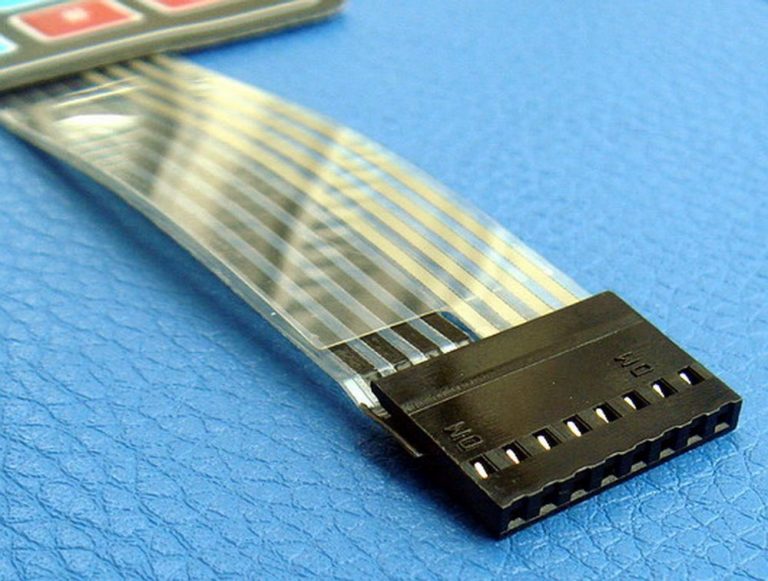Exactly How Membrane Switches Enable Lightweight and Sturdy Interface Solutions
Exactly How Membrane Switches Enable Lightweight and Sturdy Interface Solutions
Blog Article
Discover the Future of Control Interfaces: Why Membrane Switches Are Gaining Popularity
As industries significantly prioritize easy to use and reliable control user interfaces, membrane buttons are emerging as an engaging service that incorporates performance with design versatility. Their resilience and portable nature make them particularly matched for a range of applications, from medical care to consumer electronic devices. With the increase of clever innovation and sustainability concerns, the abilities and innovations bordering membrane layer changes warrant more detailed evaluation. What specific benefits do they provide that could redefine our communications with technology in the coming years?
Understanding Membrane Switches
Membrane layer buttons are important elements in contemporary electronic devices, offering as user interfaces in between devices and users. These buttons are composed of several layers, normally including a graphic overlay, a spacer layer, and a circuit layer.

Resilience is an additional crucial feature, as membrane layer switches can be developed to stand up to environmental factors such as dampness, dust, and chemicals. This strength makes them optimal for applications in harsh problems. In general, recognizing the structure and function of membrane layer switches is critical for appreciating their duty in the evolution of interface in today's technology-driven world.
Secret Benefits of Membrane Layer Switches
Using a variety of benefits, membrane layer buttons have ended up being a recommended choice in different applications (Membrane Switches). Among the primary advantages is their small layout, enabling makers to maximize space in gadgets without jeopardizing capability. Membrane switches are light-weight, which is specifically valuable in portable electronic gadgets

In addition, these buttons give excellent sturdiness. Built from adaptable products, they are immune to dirt, dampness, and a variety of environmental elements, making them appropriate for extreme conditions. This toughness often translates into a much longer life-span contrasted to traditional mechanical switches.
Moreover, membrane switches allow for seamless integration of signs and graphics, supplying visual adaptability and boosting customer experience. Modification alternatives are substantial, making it possible for brand names to develop one-of-a-kind interfaces that align with their product identification.
An additional key benefit is their convenience of cleansing and maintenance. The flat surface of membrane switches avoids the accumulation of dust and grime, making them perfect for hygienic environments. Last but not least, membrane layer switches are affordable, as they can be produced in high volumes at reduced prices, making them easily accessible for a large variety of industries. These aspects collectively add to their boosting popularity in modern-day control user interfaces.
Applications Throughout Industries

A myriad of industries are progressively adopting membrane layer buttons because of their versatility and capability. These manage interfaces are specifically common in the auto industry, where they are made use of in control panels and infotainment systems, giving a smooth and straightforward user interface. In the medical field, membrane layer switches over facilitate the operation of diagnostic tools and person monitoring systems, making sure have a peek here integrity and convenience of use in important scenarios.
Additionally, the consumer electronics market take advantage of membrane layer buttons in devices such as microwaves and push-button controls, permitting structured style and boosted resilience. Membrane Switches. The aerospace industry likewise uses membrane switches in cockpit controls, where area restrictions require small and effective style options
Additionally, the commercial market utilizes membrane switches in machinery control board, supplying strength versus rough settings and making sure functional effectiveness. Retail environments have embraced membrane layer buttons in point-of-sale systems, improving individual interaction while maintaining aesthetic allure.
Layout Fads in Membrane Layer Switches
Developing alongside technical improvements, style trends in membrane layer buttons are progressively concentrated on boosting individual experience and aesthetic appeal. Modern membrane layer switches are being developed for simplicity and instinctive usage, allowing customers to browse interfaces easily. This change towards user-centric layout highlights tactile feedback, ensuring that customers get immediate verification of their actions.
Additionally, personalized graphics and colors are becoming typical functions in membrane button styles. This flexibility permits makers to create tailored interfaces that align with branding and certain user demands. The incorporation of backlighting is an additional popular fad, as it not only boosts exposure in low-light problems however additionally adds an aesthetically striking element to the general design.
This change not just boosts appearances but also contributes to the overall functionality and resilience of the switches. These design trends jointly emphasize the expanding relevance of incorporating type and function in the advancement of membrane switches, inevitably improving the customer experience.
Future Overview for Control Interfaces
The future of control interfaces is poised view it now for significant makeover as arising modern technologies remain to reshape user communications throughout different gadgets. The integration of innovative products, such as conductive inks and adaptable electronic devices, will boost the adaptability and performance of membrane buttons, making them progressively adaptable to a series of applications. In addition, the increase of the Web of Points (IoT) will certainly drive demand for even more user-friendly, user-friendly user interfaces that can perfectly integrate with wise devices.
As expert system and artificial intelligence develop, control user interfaces will likely incorporate even more personalized attributes, allowing customers to communicate with tools in manner ins which are customized to their preferences and behaviors (Membrane Switches). This change in the direction of user-centric style will certainly position membrane switches as here a key player in the market, specifically in markets like healthcare, auto, and consumer electronic devices
Furthermore, the promote sustainability will certainly encourage makers to explore eco-friendly products and manufacturing methods, making certain that the future of control user interfaces aligns with environmental considerations. On the whole, as modern technology remains to advancement, membrane switches will certainly end up being significantly sophisticated, paving the way for ingenious control options that improve individual experience and operational efficiency across diverse industries.
Final Thought
In final thought, the enhancing adoption of membrane layer changes highlights their importance in the evolution of control user interfaces. As easy to use interfaces become essential in the context of IoT and AI innovations, membrane layer switches are placed to play a vital function.
As industries significantly prioritize user-friendly and reliable control interfaces, membrane layer buttons are emerging as an engaging service that combines functionality with style versatility.Resilience is an additional crucial feature, as membrane layer switches can be created to resist ecological factors such as wetness, dirt, and chemicals.Progressing together with technical developments, layout trends in membrane buttons are increasingly concentrated on enhancing customer experience and visual allure. Modern membrane switches are being developed for simpleness and user-friendly use, permitting individuals to navigate interfaces effortlessly. These style fads collectively emphasize the expanding relevance of incorporating type and feature in the advancement of membrane layer switches, ultimately enhancing the individual experience.
Report this page